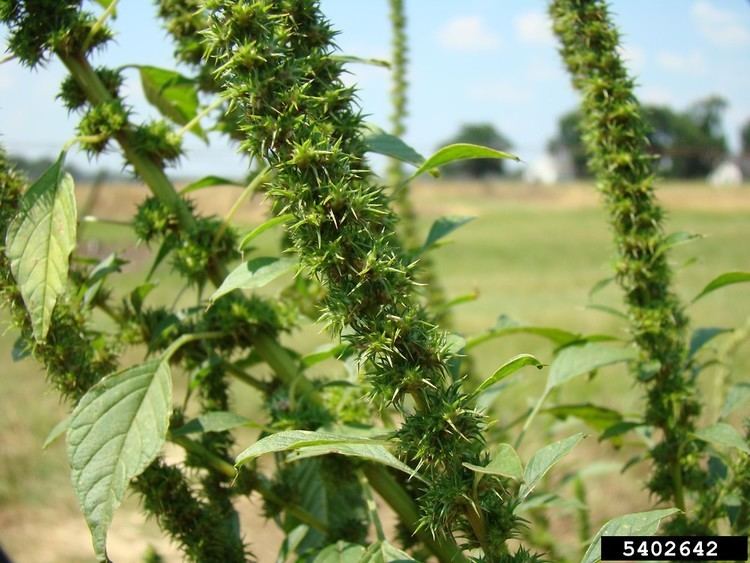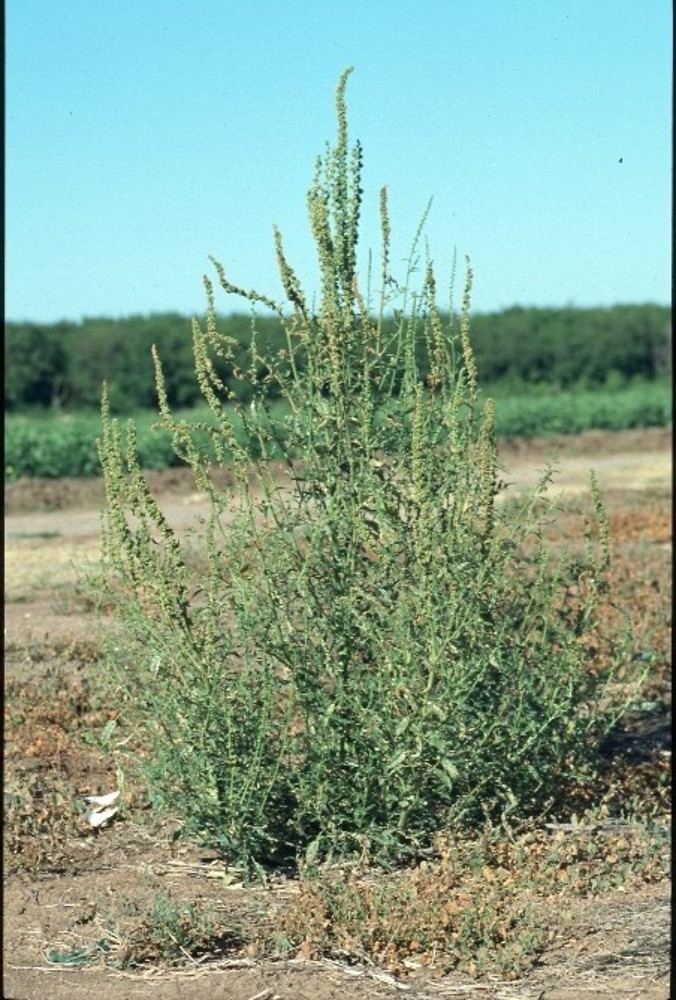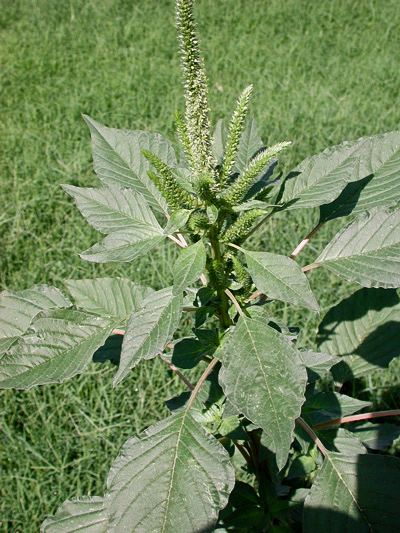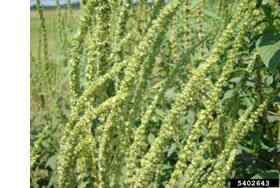Scientific name Amaranthus palmeri Rank Species | Genus Amaranthus Higher classification Amaranth | |
 | ||
Similar Amaranth, Amaranthus tuberculatus, Amaranthus hybridus, Amaranthus retroflexus, Ambrosia trifida | ||
Cookin up some careless weed amaranthus palmeri
Amaranthus palmeri is a species of edible flowering plant in the amaranth genus. It has several common names, including carelessweed, dioecious amaranth, Palmer's amaranth, Palmer amaranth, and Palmer's pigweed. It is native to most of the southern half of North America. Populations in the eastern United States are probably naturalized. It has also been introduced to Europe, Australia, and other areas. The plant is fast-growing and highly competitive.
Contents

Uses

The leaves, stems and seeds of Palmer amaranth, like those of other amaranths, are edible and highly nutritious. Palmer amaranth was once widely cultivated and eaten by Native Americans across North America, both for its abundant seeds and as a cooked or dried green vegetable. Other related Amaranthus species have been grown as crops for their greens and seeds for thousands of years in Mexico, South America, the Caribbean, Africa, India, and China.

The plant can be toxic to livestock animals due to the presence of nitrates in the leaves. Palmer amaranth has a tendency to absorb excess soil nitrogen, and if grown in overly fertilized soils, it can contain excessive levels of nitrates, even for humans. Like spinach and many other leafy greens, amaranth leaves also contain oxalic acid, which can be harmful to individuals with kidney problems if consumed in excess,.

Because of its toxicity to livestock, and scarce familiarity in the United States with the uses of amaranths as food, Palmer amaranth is rarely consumed nowadays, despite its ubiquity and resistance to drought. Unlike the grain and leaf amaranths of other regions, it has not been cultivated or further improved by recent agricultural breeding. As a result, the primary economic importance of Palmer amaranth to American farmers has been as a noxious weed and a competitor to more marketable crops, rather than as a crop in its own right.
As a weed

Palmer amaranth is considered a threat most specifically to the production of cotton and soybean crops in the southern United States. In many places, the plant has developed resistance since at least 2006 to glyphosate, a widely used broad-spectrum herbicide. Glyphosate-resistant pigweed not only dominates in cotton fields, but also has wide-ranging effects on other crops and productions. In 2001, Palmer amaranth was found in the southern quarter of Illinois and appeared to be moving to northern Illinois in 2006.
In 2014, the Texas Department of Agriculture asked the Environmental Protection Agency for permission to use the restricted chemical herbicide propazine on 3 million acres of cotton threatened by Palmer amaranth. The request was denied due to unacceptable risks to drinking water.
Studies
Weed scientists have performed tests on resistant Palmer pigweed. In this study, glyphosate was sprayed on resistant pigweed three times at 88 ounces per acre. The Palmer pigweed that received 264 ounces of glyphosate was still alive and healthy. The drought-plagued cotton plants were dwarfed by the glyphosate-resistant weed. Trying to control resistant pigweed with more and more glyphosate makes controlling this pigweed a problem. The use of this herbicide takes out all the herbicide-sensitive Palmer pigweed, thus creating an environment for resistant pigweed to grow and reproduce. A process called "deep turning" can control or prevent the spread of Palmer pigweed; however, the best prevention is to remove the weed pest by hand.
Growth
Palmer amaranth may be the most aggressive pigweed species with respect to growth rate and competitive ability. Palmer amaranth or Palmer pigweed in particular is highly competitive. It will outgrow cotton and is much more efficient. Growers of crops have not been able to provide adequate moisture to offset temperatures staying above 85°F with 112°F heat indices. In these conditions, many herbicides break down over time and Palmer pigweed will keep thrusting. It can grow from 2-5 inches in three days or less. In only a few weeks, it can grow from 12 to 18 in compared to cotton at 5 to 8 in.
Spread
Pollen is most commonly spread by wind. The male produces the pollen and the female plant produces the seed. The wind carries the pollen from resistant male plants to female plants. In addition, the seed is spread by traditional means, such as harvesting, lack of cleaning equipment, and the spreading of infested materials, such as manure.
In 2014, North Dakota State University's "ND Weed Control Guide" selected Amaranthus palmeri, as "weed-of-the-year" to raise awareness about its "potentially devastating impact." In 2015, Palmer amaranth was chosen as "weed-of-the-year" for the second year in a row as a "proactivce approach to prevent Palmer amaranth establishment in North Dakota."
